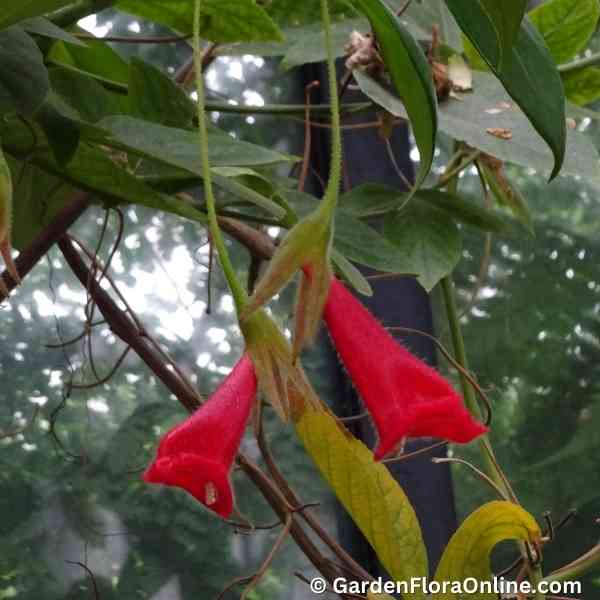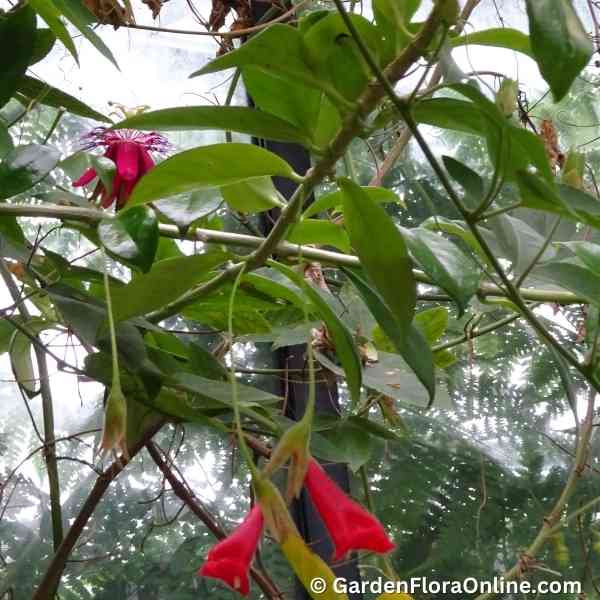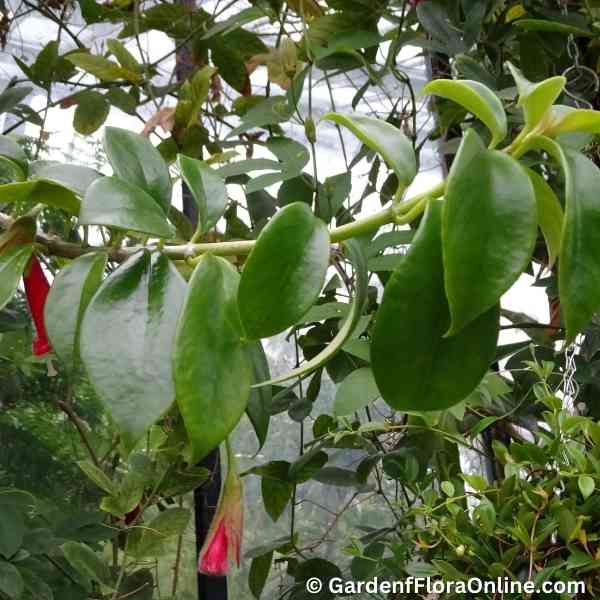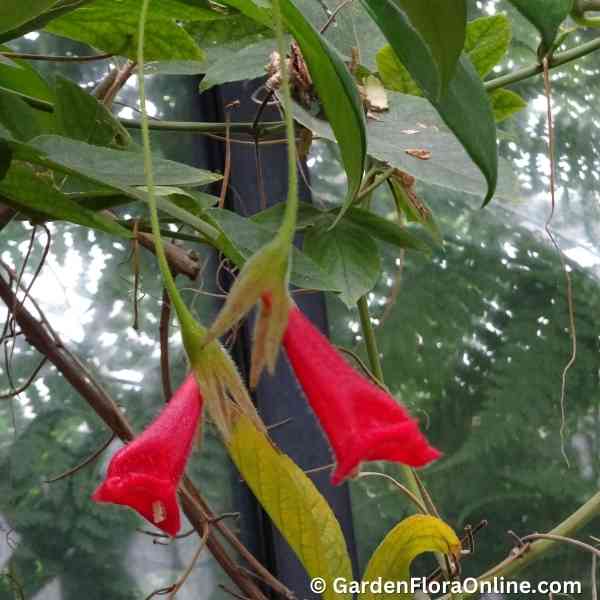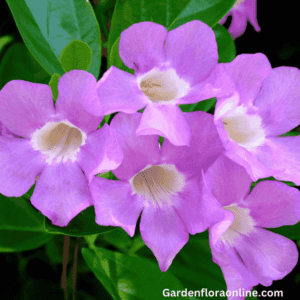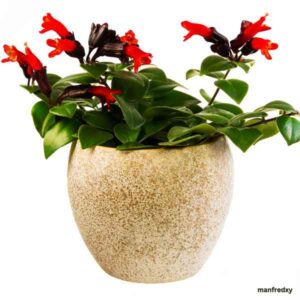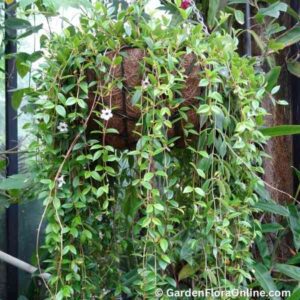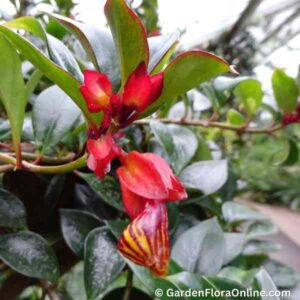Nematanthus crassifolius
Leaf anisophyllous, blade ovate to elliptic, glabrous to glabrescent; apex acuminate, base cuneate, margin entire; abaxial surface entirely green or reddish. Flowers axillary, occurring singly or in pairs. Pedicel pendulous; calyx green, lobes lanceolate, erect; calyx margin entire or slightly serrate, apex green or reddish. Corolla villose, infundibular, laterally flattened; tube red, lobes uniformly colored. Fruit with wine-colored pericarp, internal valve surface wine-colored or cream, funiculus cream-colored (Araujo et al. 2024).
Cultivation: Thrives in warm, humid conditions, making it ideal for indoor cultivation or outdoor environments with similar climates. It prefers bright, indirect light, as direct sunlight can scorch its leaves. A well-draining potting mix, such as a combination of peat moss, perlite, and orchid bark, is essential to prevent root rot. Water the plant when the top inch of soil feels dry, ensuring that it does not sit in waterlogged conditions. High humidity supports optimal growth, and occasional misting or placement near a humidifier can be beneficial. Propagation is typically done through stem cuttings, which root easily in water or moist soil. Take 3-4 inch cuttings with a few leaves, remove the lower leaves, and place them in a suitable rooting medium. Roots usually develop within a few weeks, after which the cuttings can be potted up. Regular pruning helps maintain a compact shape and encourages blooming.
Etymology: The genus name Nematanthus is derived from the Greek words nema, meaning thread, and anthos, meaning flower, referring to the thread-like structure of the flowers pedicel. The specific epithet crassifolius comes from the Latin words crassus, meaning thick, and folium, meaning leaf, referring to the plants thick, fleshy leaves.

